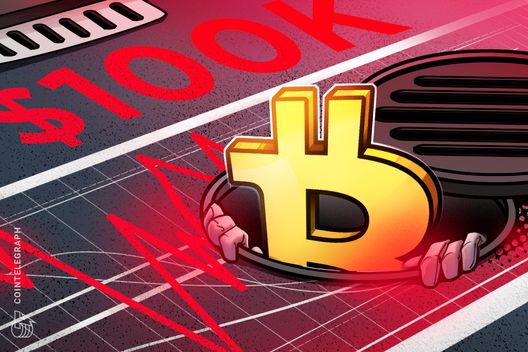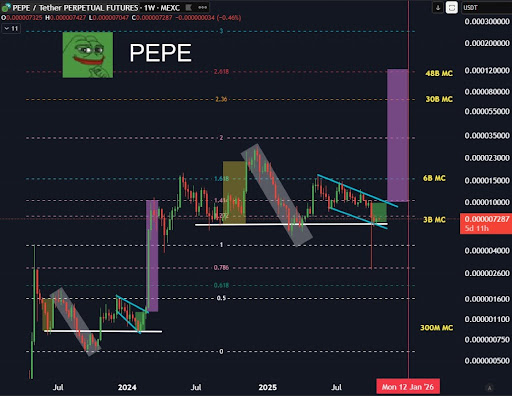A fresh wave of bullish optimism has swept across the meme coin community as technical analysts point to a potential explosive rally that could propel the PEPE price by more than 1,500%. This massive surge could see the meme coin breakout toward a new all-time high of $0.00012 by early 2026. PEPE Price Targets $0.00012 With Final Accumulation Zone An analyst from Wins, a cryptocurrency trading school, has projected on X social media a 1,500% move in the PEPE price, forecasting a potential rally toward $0.00012. According to the chart, this bullish target aligns with a projected increase in market capitalization from $2.89 billion to $48 billion. The analysis highlights a Fibonacci Extension setup with a 2.618 target positioned near the $0.00012 level. Related Reading: PEPE Price Prediction: Analyst Says Market Is Ready After Crash, Here’s The Target The chart analysis also reveals that PEPE is consolidating within a descending wedge pattern, suggesting a strong bullish reversal once a breakout occurs. Currently, the meme coin is trading around $0.0000068, corresponding with a forecasted surge in market cap to $3 billion. The analyst has identified the current price range, visualized by the green accumulation box, as the final buying opportunity before the next leg upward. The pattern mirrors PEPE’s previous accumulation and breakout phase from late 2023 to early 2024, where a similar descending wedge formed before a significant price surge. Fibonacci retracements and extensions on the chart suggest that once PEPE clears resistance near $0.000015 and sees its market cap increase to $6 billion, momentum could accelerate toward $0.000035 and eventually reach the final target at $0.00012. The analyst has set the timeline for PEPE to achieve this target around January 12, 2026. PEPE Historical Setup Signals Major Price Rally Sharing similar bullish sentiments for PEPE’s price outlook, crypto analyst Chandler wrote on X that “no one is ready for what’s coming for PEPE.” He shared a technical analysis projecting a massive rally for PEPE based on historical trends to support his bold statement. Related Reading: The Big PEPE Price Breakout: Falling Wedge Pattern Points To 64% Rally The comparative chart analysis overlays two distinct timeframes from September 2023 to February 2024 and September 2023 to October 2025. The chart shows repeating cyclical structures, marked by colored circles representing accumulation, breakout, correction, and consolidation phases. In 2023 – 2024, these patterns preceded a major upward move that took the PEPE price to a new all-time high, from $0.0000009 to $0.0000035, representing a staggering 288% increase. Chandler’s current projection suggests the meme coin is completing a similar sequence, with the blue-circled region around $0.00000728 marking a potential bottom before a powerful surge. The analyst’s forecast maps out a sharp rise to $0.000015 first, followed by a slight drop before an explosive rally above $0.00035, marking a staggering 4,708% gain from the bottom level. Featured image from Medium, chart from Tradingview.com









